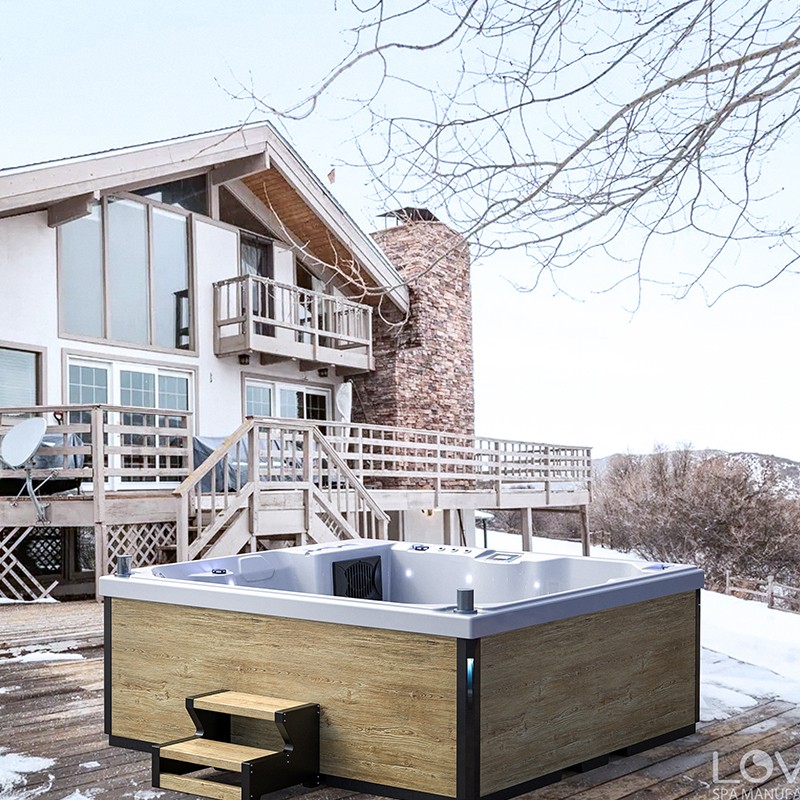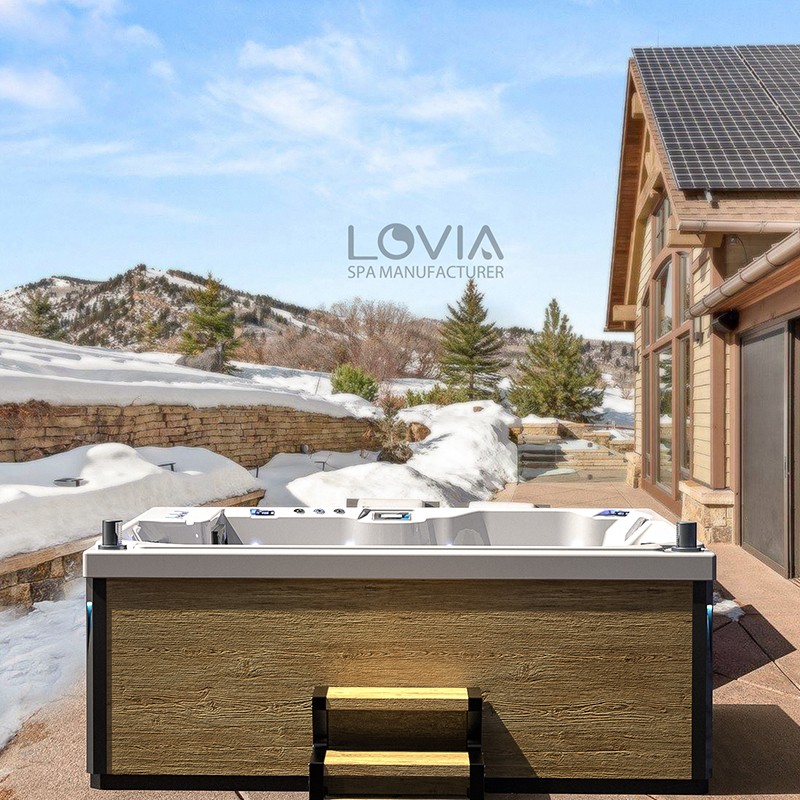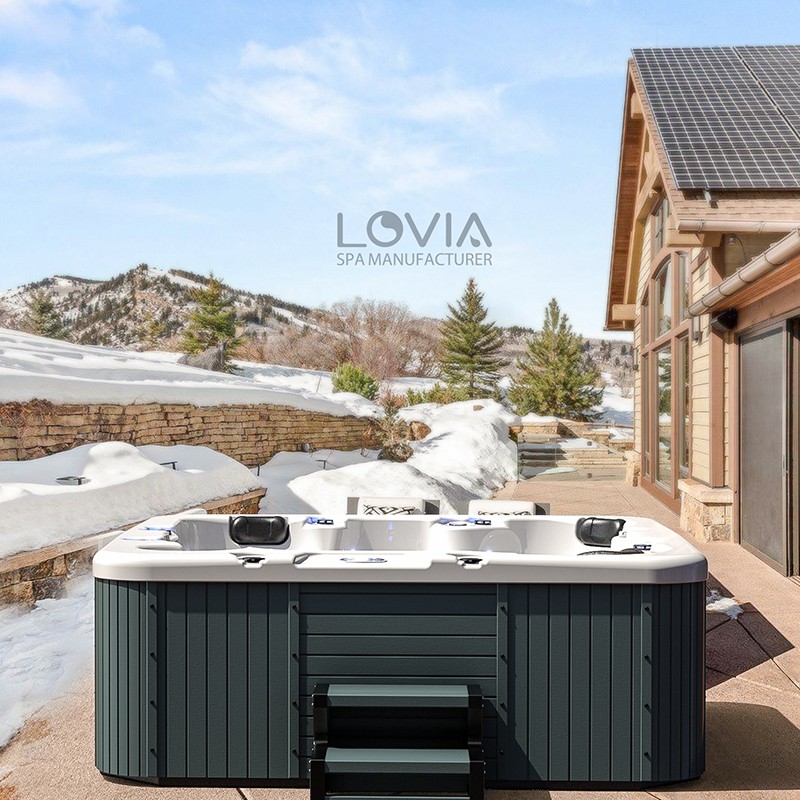
Do I need to drain my hot tub in the winter?
2024-11-18 15:35For outdoor hot tub users, the question "Do I need to drain my hot bathtub in the winter?" is a question that is of great concern. The answer to this question is not absolute, as it depends on a variety of factors, including the climate in your area, the design type of hot tub, the frequency of use, and the ease of maintaining the equipment.
This article will take a closer look at whether you need to drain your hot tub in the winter and analyze the impact of this decision on the equipment from multiple angles to help users make the best choice.

What are the winter challenges of hot tubs?
First of all, it is necessary to understand how hot bathtubs work. At its core, it is the heating and water circulation system. Through the water pump, the water in the hot tub circulates between the filtration system and the heater to maintain a comfortable water temperature, ensuring that users can enjoy a warm bathing experience. However, in the low temperature environment of winter, this system faces many challenges.
1. Water temperature loss: Outdoor temperatures are usually low in winter, especially in cold regions, and the temperature can even drop below freezing. This extreme temperature will accelerate the loss of water temperature, forcing the heater to work frequently, and significantly increase energy consumption. If the water is not kept warm in time or the water temperature drops too quickly, the water may freeze, posing a serious risk of damage to the entire system.
2. Risk of frozen pipes: The hot tub’s plumbing system is key to maintaining water circulation. If there is not enough flowing water in the pipes or the equipment stops running in low temperatures, the water may freeze. Pipe freezing not only prevents the normal flow of water, but may also cause pipe ruptures, equipment damage, and expensive repairs.
Therefore, in the cold winter, ensuring that the water in the hot water tub does not freeze is key to keeping it running. The main purpose of draining the water is to prevent water from freezing in extremely cold weather and prevent financial losses from burst pipes.

What are the benefits of draining a hot tub?
Draining a hot tub is a wise choice in some cases. Here are a few key benefits of draining a hot tub in winter:
1. Preventing water from freezing
2. Reducing equipment maintenance pressure
3. Saving energy
Preventing water from freezing:
The most obvious benefit is preventing water from freezing. If you live in an area that often experiences extremely cold weather, especially when the temperature remains below zero for a long time, draining the hot water tub can prevent equipment damage caused by water freezing. Even if you have an advanced heating system or antifreeze device, prolonged extreme low temperatures may still make it difficult for the equipment to cope.
Reduced maintenance:
If you don't plan to use your hot tub throughout the winter, draining it can significantly reduce maintenance requirements. Leaving water in the tub requires you to regularly monitor the water quality, heating and water circulation system to prevent problems such as freezing. Draining the water puts the unit in a "dormant" state, eliminating the need for frequent inspections.
Saves energy:
Keeping your hot bathtub running in the winter consumes a lot of energy, especially when the outside temperature is low, and the hot tub heater will work more frequently. By draining the water from the tub, you can effectively reduce energy consumption and lower your electricity bill. After all, it takes much more energy to keep the water warm in the hot tub in the winter than in the spring and fall.
Why is it sometimes not recommended to drain the hot tub?
Although draining the water has its benefits, it is not always recommended. In fact, many users find that leaving the hot tub full and at a minimum temperature can be a more convenient and safer option. Here are some reasons why it is not recommended to drain a hot bathtub:
1. Prevent dry damage to the device
2. Trouble with restarting
3. Safety of continuous operation of the device
Prevent dry damage to the device:
Most hot water tub internal parts, especially seals and water pumps, are designed to operate in a water environment. If water is not used for a long time, the internal parts of the device may be damaged due to dryness. For example, parts such as seals and pump shafts may crack due to lack of lubrication, causing the device to lose its seal, which may lead to leaks or other failures.
Trouble with restarting:
After winter, if you decide to restart the hot tub, filling it with water and reheating it may take a long time, especially in early spring when the temperature is still low. In addition, you may also need to clean the tub, filter, and pipe system when restarting to ensure that there is no residual dirt or chemicals, which may be a time-consuming task for users.
Safety of continuous operation of the device:
Modern hot water tubs are generally equipped with anti-freeze mode or thermostat. These features can keep the water circulating inside the device in low temperature environments and automatically adjust the water temperature to prevent the water from freezing. If your tub has these features, it’s safer and less laborious to keep the water flowing than to drain it, even in extremely cold weather. Many users continue to use their hot tubs sporadically during the winter, so keeping the water at a moderate temperature can save you the hassle of repeated draining and reheating.

What are the correct steps for draining the water?
If you decide to drain your hot tub in the winter, it’s important to follow the correct steps to prevent potential problems from improper draining. Here are a few key steps and things to note when draining your hot bathtub:
1. Drain all water completely
2. Clean your hot tub
3. Open all drain valves and fittings
4. Protect the unit with a protective cover
Drain all water completely:
First, turn off the power and make sure the unit is off. Next, find the hot tub’s drain valve and drain the water. To ensure a complete drain, you may need to use a water pump to suck out any remaining water in the pipes. Pay special attention to the water in the filtration system, heater, and pump, which can easily accumulate water and be difficult to drain.
Clean your hot tub:
After draining the water, it’s recommended to thoroughly clean the inside of the hot tub. Long periods of inactivity during the winter may cause dirt or scale to accumulate on the inner walls of the tub. Cleaning not only ensures that the water quality is safe for the next use, but also prevents the long-term attachment of deposits, which may cause damage to the equipment.
Open all drain valves and accessories:
Make sure that all water-related valves, pipes, and nozzles are fully open and that there is no residual water. Even a small amount of water can freeze in extremely cold weather and cause damage to pipes. Therefore, it is very important to completely drain and air dry all parts.
Protect the equipment with a protective cover:
Even though you have drained the water, you still need to equip your hot tub with a protective cover during the winter. The insulated cover can prevent the impact of external factors such as snow, sleet, etc. on the equipment, prevent external debris from entering the system, and prevent excessive wear and tear caused by exposure to the outside world during the winter.

What are the precautions when not draining the hot tub in winter?
If you decide not to drain the water in the hot bathtub in winter, it is also crucial to ensure that the equipment operates safely in low temperatures. Here are some basic precautions that can help you maintain the normal operation of the hot tub in winter.
Maintain a constant water temperature:
To prevent the water from freezing, many hot water tubs are equipped with an anti-freeze mode. You can set the system to low-temperature hold mode so that the heater automatically switches on when the temperature drops below a certain threshold. This ensures that water continues to flow through the pipes and maintains a safe temperature to prevent ice from forming.
Check the unit regularly:
Even if you don't use your hot tub often, it's still a good idea to check the unit regularly during the winter to make sure the heater and pump are working properly. Check the water level to make sure it's not too low due to evaporation or leaks. Low water levels can cause the unit to overheat and cause damage.
Clear snow and ice:
Snow and ice can form a thick coating on the surface of your hot tub during the winter. Snow and ice accumulation have no direct effect on the unit itself, but they can increase heat loss. Regularly clearing snow and ice from your hot water tub cover can help retain heat and reduce the unit's energy consumption.
